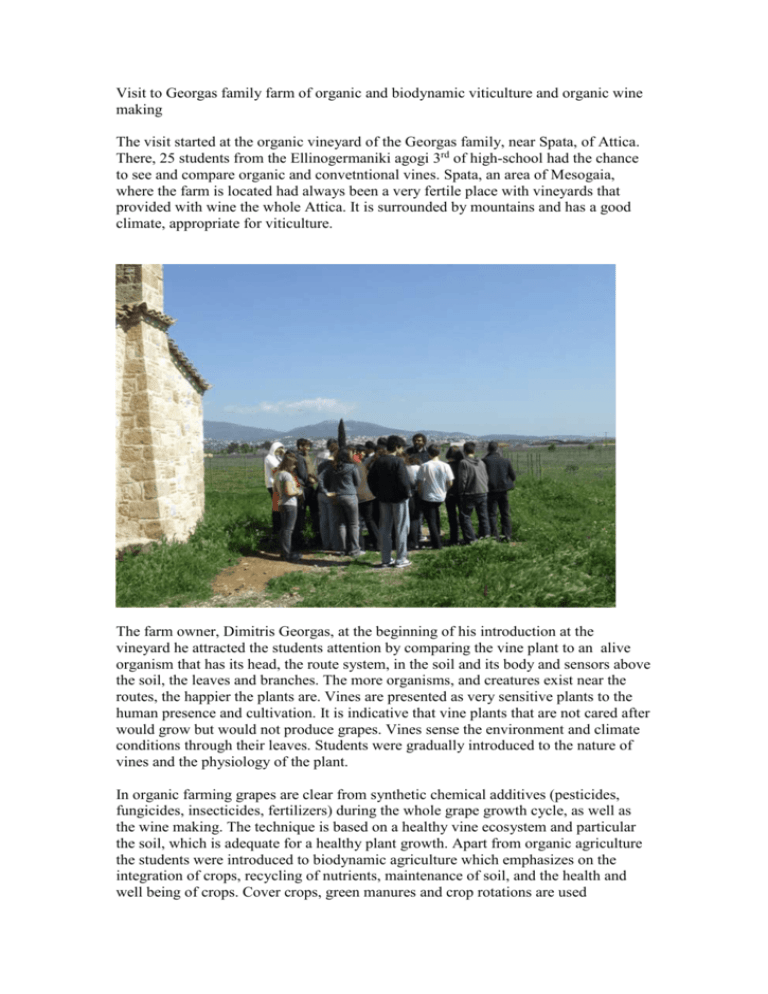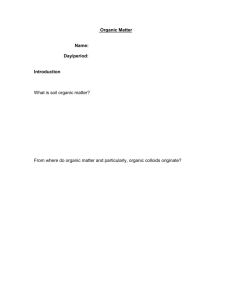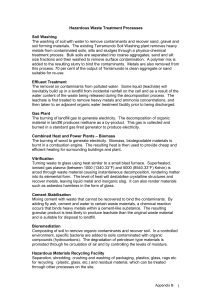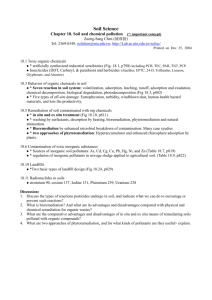Visit to Georgas family farm of organic viticulture and organic wine
advertisement

Visit to Georgas family farm of organic and biodynamic viticulture and organic wine making The visit started at the organic vineyard of the Georgas family, near Spata, of Attica. There, 25 students from the Ellinogermaniki agogi 3rd of high-school had the chance to see and compare organic and convetntional vines. Spata, an area of Mesogaia, where the farm is located had always been a very fertile place with vineyards that provided with wine the whole Attica. It is surrounded by mountains and has a good climate, appropriate for viticulture. The farm owner, Dimitris Georgas, at the beginning of his introduction at the vineyard he attracted the students attention by comparing the vine plant to an alive organism that has its head, the route system, in the soil and its body and sensors above the soil, the leaves and branches. The more organisms, and creatures exist near the routes, the happier the plants are. Vines are presented as very sensitive plants to the human presence and cultivation. It is indicative that vine plants that are not cared after would grow but would not produce grapes. Vines sense the environment and climate conditions through their leaves. Students were gradually introduced to the nature of vines and the physiology of the plant. In organic farming grapes are clear from synthetic chemical additives (pesticides, fungicides, insecticides, fertilizers) during the whole grape growth cycle, as well as the wine making. The technique is based on a healthy vine ecosystem and particular the soil, which is adequate for a healthy plant growth. Apart from organic agriculture the students were introduced to biodynamic agriculture which emphasizes on the integration of crops, recycling of nutrients, maintenance of soil, and the health and well being of crops. Cover crops, green manures and crop rotations are used extensively. The approach also attempts to consider celestial influences on soil and plant development and to revitalize the farm, its products, and its inhabitants. To understand organic viticulture students were exposed to a direct comparison of the conventional and organic vineyards Conventional vineyard Organic vineyard Through dialogue and questions the students draw conclusions regarding the presence and usefulness of flowers, and others small plants, which in a conventional vineyards would be considered pests and harmful weeds. It became evident to them that in the organic vineyards the weeds, the flowers, and other little plants, protect the vine plant by creating a complete ecosystem, keeping the life of the plant balanced, and nurture its soil with rich ingredients. The presence of certain insects that are attracted by specific weeds and flowers repel other insects and organism that would otherwise harm the vine. Mr Georgras drew his students attention to a very illustrative comparison of conventional (to the left) and organic (to the right) soil, as he took and compare a handful of soil from the two vineyards. He asked the students what soil would they use for the pots at home. Most of the students pointed to the conventional soil. The difference (or even misconception) was clarified by reference to the richness of the soil, the presence of live organism, and recycled matter. Next to the organic vineyard lied a huge pile of organic compost made from the remains of grapes after the winemaking. This is for the wine plants the best foods they could ever get. Then the students had the chance to observe an organic vine tree from a very close distance, touch it and observe the surrounding plants. The visit ended at the winery, where the students were shown how wine is produced, bottled and packaged.






